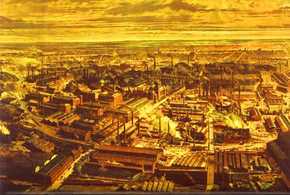The Northeast of the United States has long been a hub of industrialization, with cities like New York and Boston as leading centers of industry. From its earliest settlers, the Northeast was a place of remarkable resource potential, with its many rivers, harbors, and fertile soils. But it was the geography of the region that truly set it apart, providing the perfect conditions for industrialization to take root and thrive.
The Northeast's coastal geography was the key factor in the region's industrialization. Its many ports allowed for easy access to global markets and provided the perfect environment for the growth of the shipping industry. The abundance of resources in the region also provided the raw materials necessary for the production of goods, from textiles to iron and steel. And, of course, the presence of major rivers like Connecticut, Hudson, and Susquehanna ensured that raw materials could be easily transported to the cities for processing.
The presence of large cities and the concentration of people in the region was a major factor in the industrialization of the Northeast. The growing population in the region provided a steady source of workers for the factories, which helped fuel their growth. In addition, the concentration of people in the region provided a ready market for the goods produced by the factories. This, in turn, helped to create a vibrant economy, with money flowing into the region in the form of wages and profits.
The Northeast's geography also helped spur innovation in the region. Its many rivers and harbors provided a natural setting for shipbuilding and other maritime activities, while its many cities offered the perfect conditions for the development of new technologies. This allowed the region to become a major center of invention and innovation, which, in turn, helped to fuel its industrialization.
Finally, the Northeast's geography was also a major factor in the region's economic development. The region's many ports provided the perfect environment for trade, allowing goods to be shipped in and out of the region with ease. This, in turn, helped to create an economic network that allowed for the exchange of goods and services between the region and the world.
All in all, the geography of the Northeast was an important factor in the region's industrialization. Its ports, resources, cities, and rivers provided the perfect conditions for the growth of the region's industries, while its concentration of people provided the perfect market for the production and sale of goods. In addition, its geography helped to spur innovation, which, in turn, helped to fuel the region's economic development. As such, the geography of the region played a key role in the industrialization of the Northeast.
